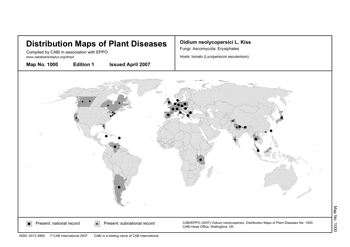A press release from the Netherlands Organisation for Scientific Research is creating tiny ripples in the blogosphere because it suggests that fertilizer, rather than water, is what poor farmers in semi-arid regions of Zimbabwe need to improve their crops. That’s certainly one conclusion from the research of Dr Bongani Ncube, who successfully defended her doctoral dissertation 10 days ago. (Congratulations, Bongani.) More important, I think, is the demonstration that almost regardless of water, sorghum crops benefit enormously from a preceding grain legume. There’s an interaction with rainfall to be sure. In a dry year, cowpea yields more than groundnut or bambara groundnut, but sorghum is always better after a nitrogen-fixing legume. That’s not to say that farmers shouldn’t make use of a little artificial fertilizer if they can afford it. But a better strategy might be to grow a variety of grain legumes, to buffer any possible effects of rainfall, and then plant sorghum, using agricultural biodiversity instead of cash to increase the harvest.
What’s so special about Oidium neolycopersici?
It’s a disease that affects mostly tomatoes, more commonly known as tomato powdery mildew. It has only recently been identified as a separate species. And it is the 1000th disease to be mapped by CABI, a fact we noted from CABI’s blog.

Distribution Maps of Plant Diseases is a series that has been going since 1942. To view the maps you need to subscribe, although CABI has generously made map no. 1000 available free 1. There’s also a collection of Distribution Maps of Plant Pests. Apparently, many of the maps have been drawn up more than once. What I’d really like to see would be time series animations showing how pests and diseases have moved around the world in recent years, what with climate change, air travel and a host of other contributory factors. How about it CABI?
More on gorilla medicine
It’s wonderful what happens when a real expert gets stuck into a question. Back in November, Luigi briefly blogged a story about pharmaceutical researchers who derived some inspiration from gorillas and their liking for a particular plant. In the comments, Kathryn Garforth Mitchell wondered about the access and benefit sharing aspects of the story. Luigi, characteristically, had no idea, feared for the worst, and hoped he was wrong. Well, maybe his hopes were not in vain, because Kathryn has spent the past four months ferreting out the details and piecing most of the story together. The result is an illuminating series of posts that shows just how complex arrangements can be. I’m not going to link to all four of them; you should start at number one — Gorilla medicine: a complex web — and work your way through them.
One interesting point of direct relevance. Scientists in the US say that they may source the active compounds from plants grown locally in Nigeria or Ghana. This is very atypical of pharmaceutical arrangements, which usually involve discovering the active ingredient in a plant and then synthesizing it chemically. It is also, perhaps, the biggest source of confusion for those interested in access and benefit sharing of specifically agricultural products. While genes may be discovered in farmer varieties and wild relatives, the value of those genes never derives from the manufacture of the gene’s products.
Online conference for you
Markus Schmidt has invited any readers of this blog to take part in an e-conference on neglected and underutilized species in Asia. The day job prevents me from taking part, but I’m sure it will be pretty interesting, and some colleagues may well be there. I hope we’ll be able to link to the outcomes. Here’s the message from Markus:
Until April 17 2007 the European research project “Agrofolio” hosts an e-conference on Neglected and Underutilized Species NUS in selected southeast Asian countries (Thailand, Cambodia and Vietnam) and China. During the e-conference we will discuss our preliminary list of NUS in Asian countries and the role of developed countries ( e.g. Europe, North America, Japan) in their possible support or unintented hindering (e.g. trade barriers) for sustainable use of NUS in Asian countries.
You can participate by registering for free at www.agrofolio.eu/forum/, or send an email to e.conference@agrofolio.eu.
Tangled Bank
Tangled Bank No. 77 is up at Aetiology, with its usual selection of blog-posts on biology in general. That includes Andy Jarvis’ piece on climate change here, and also news that chimpanzees may have been using tools — stones to crack nuts — for more than 4000 years. That doesn’t quite make them proto-hunter gatherers, but it is somewhat mind-blowing that the scientists were able to identify a bunch of stones as tools.